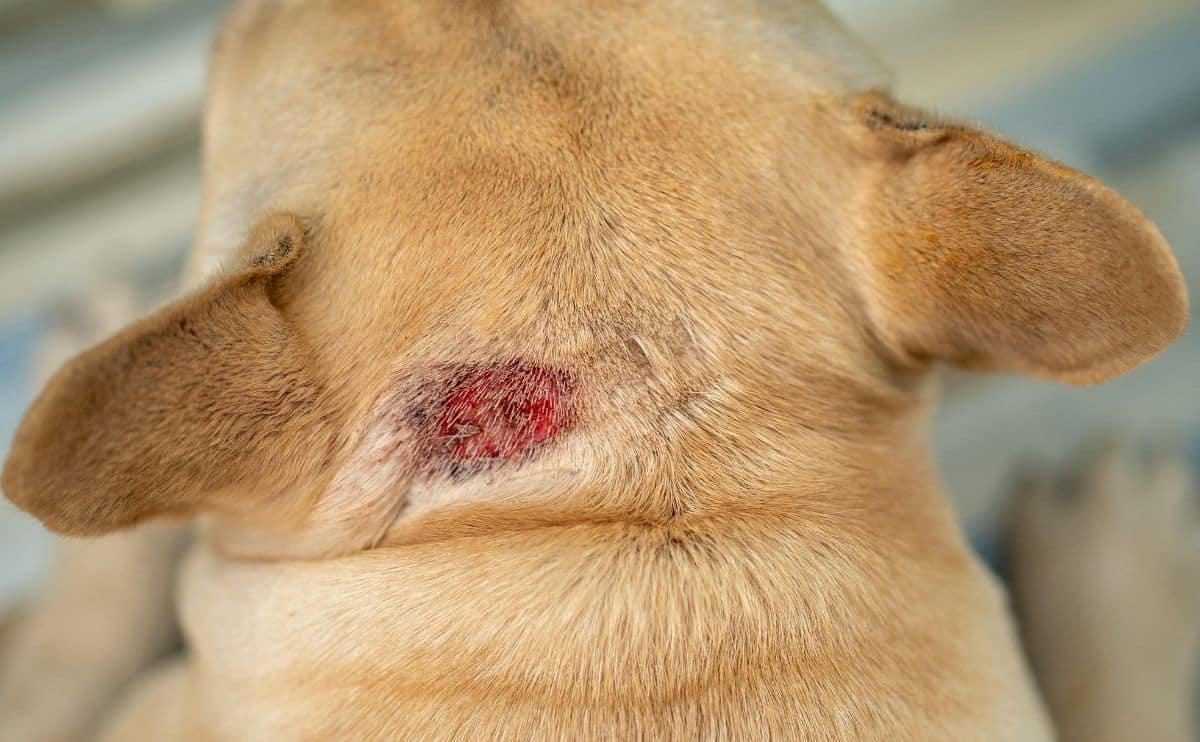Conjunctivitis In Dogs: Symptoms, Causes & Treatments
When you purchase through links on our site, we may earn a commission. Here’s how it works.

Conjunctivitis can be a real pain in the eye for dogs. What seems like a simple diagnosis can prove to be much more severe. Learn more about this condition and how to know when it’s time to seek treatment.
Table of Contents
Pink Eye In Dogs: What Is Dog Conjunctivitis?
Conjunctivitis is the medical term for pinkeye, but it’s not as common in dogs as it is in humans. Pinkeye is an itchy inflammation of the conjunctiva, the tissue that covers the eye and lines the eyelids.
Can My Dog Get Pinkeye From Me?
Can you get pink eye from a dog or can your dog get it from you? Experts don’t see eye-to-eye on the answer to this question (no pun intended). Some believe dogs can contract conjunctivitis from humans, while others think it’s impossible. To be safe, we suggest that you wash your hands often, especially before touching your dog, keeping your infected eye discharge away from your dog.
Can Dogs Get Pinkeye From Other Dogs?
It depends on the type of canine conjunctivitis. If a dog has pinkeye caused by a virus, bacteria, or a parasite, then another dog could become infected if it comes into contact with the infected eye or its discharge. If the cause for a dog’s pinkeye is allergies or an eye injury, it’s noninfectious. Contagious pinkeye is rarer in dogs than in humans.
Conjunctivitis Symptoms In Dogs
If you notice your dog has a sudden occurrence of these symptoms, you should schedule an appointment with your vet.
- Squinting
- Sporadic blinking
- Redness of the eye
- Discharge from the eye (and sometimes nose)
- Eye swelling
- Crustiness around the eye
- Eyelids sticking together
- Sneezing
- Coughing
What Are The Causes Of Conjunctivitis In Dogs?
Several conditions can cause a dog to contract pink eye.
- Viral infection (e.g., canine distemper virus)
- Allergies
- Tumors
- Breed-associated disorders (e.g., nodular episcleritis in Collies)
- Tear film deficiency
- Eyelid abnormalities
- A parasite
- Foreign material in the eye
- Bacteria
- Eye trauma
- Cancers
- Obstructed tear ducts
- Other eye disorders
How Do I Treat My Dog’s Conjunctivitis?
Treatment for pinkeye varies depending on the cause (bacterial, viral, etc.). The first thing you’ll want to do as a pet parent is taking your dog to the vet. Your vet will conduct an eye exam and perform some (or all) of the following tests to determine an appropriate course of treatment:
- Fluorescein stain on the eye to help scratches, ulcers and foreign materials stand out
- Glaucoma test to identify any pressures in the eye
- Flushing out the nasal cavity
- Eye discharge culture to determine the consistency
- Biopsy of conjunctiva cells
- Allergy tests
Dog Conjunctivitis Home Treatment Or Surgery
Your dog may require a prescription (e.g., eye drops), therapy, or surgery, depending on the test results. In highly critical cases, the vet may remove the eyeball. Your vet may suggest using an eyewash to help flush your dog’s eye. You could ask your vet specifically about this Vetericyn Plus Eye Wash, and your vet can tell you how frequently to administer it. For more information on safe at-home remedies to alleviate your dog’s conjunctivitis symptoms, see our guide on Dog Pink Eye Home Remedy.
Video: Conjunctivitis In Dogs
To help spread awareness of this disease from spreading, we created this quick video that summarizes some of the causes, symptoms, and treatments.
Pinkeye Could Be Something More Serious
Pinkeye can seem like a minor diagnosis, but it could be an underlying symptom of something much more critical like cancer or a severe eye disorder. While your dog is relatively healthy, consider signing your dog up for pet insurance. If your dog is diagnosed with a grave condition or needs to undergo a significant procedure, your bank account will be more protected from an already stressful situation.




